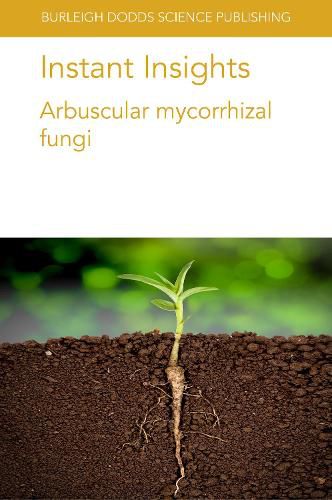Readings Newsletter
Become a Readings Member to make your shopping experience even easier.
Sign in or sign up for free!
You’re not far away from qualifying for FREE standard shipping within Australia
You’ve qualified for FREE standard shipping within Australia
The cart is loading…






This collection features four peer-reviewed literature reviews on arbuscular mycorrhizal fungi in agriculture.
The first chapter reviews the use of arbuscular mycorrhizal fungi (AMF) as biostimulants for sustainable crop production and explores the benefits of its use, such as bidirectional nutrient exchange and soil quality. The chapter discusses the requirements needed for successful implementation of AMF in sustainable crop production, and also maps the current market for mycorrhizal products.
The second chapter explores our understanding of how AMF can modify nutrient availability in soil, specifically concerning the roles that fungal ecology and physiology may play during the processes of nutrient acquisition and transformation. The chapter also refers to future opportunities in research to exploit AMF to improve nutrient-use efficiency.
The third chapter highlights further advances in our understanding of how AMF can improve root function in agricultural systems. The chapter also discusses the functional diversity apparent in plant responses to AMF colonisation.
The final chapter reviews the use of AMF-based bio-inoculants in tea cultivation. The chapter also discusses the range of AMF associated with tea and their effects on the tea rhizosphere, plant growth and quality.
$9.00 standard shipping within Australia
FREE standard shipping within Australia for orders over $100.00
Express & International shipping calculated at checkout
This collection features four peer-reviewed literature reviews on arbuscular mycorrhizal fungi in agriculture.
The first chapter reviews the use of arbuscular mycorrhizal fungi (AMF) as biostimulants for sustainable crop production and explores the benefits of its use, such as bidirectional nutrient exchange and soil quality. The chapter discusses the requirements needed for successful implementation of AMF in sustainable crop production, and also maps the current market for mycorrhizal products.
The second chapter explores our understanding of how AMF can modify nutrient availability in soil, specifically concerning the roles that fungal ecology and physiology may play during the processes of nutrient acquisition and transformation. The chapter also refers to future opportunities in research to exploit AMF to improve nutrient-use efficiency.
The third chapter highlights further advances in our understanding of how AMF can improve root function in agricultural systems. The chapter also discusses the functional diversity apparent in plant responses to AMF colonisation.
The final chapter reviews the use of AMF-based bio-inoculants in tea cultivation. The chapter also discusses the range of AMF associated with tea and their effects on the tea rhizosphere, plant growth and quality.